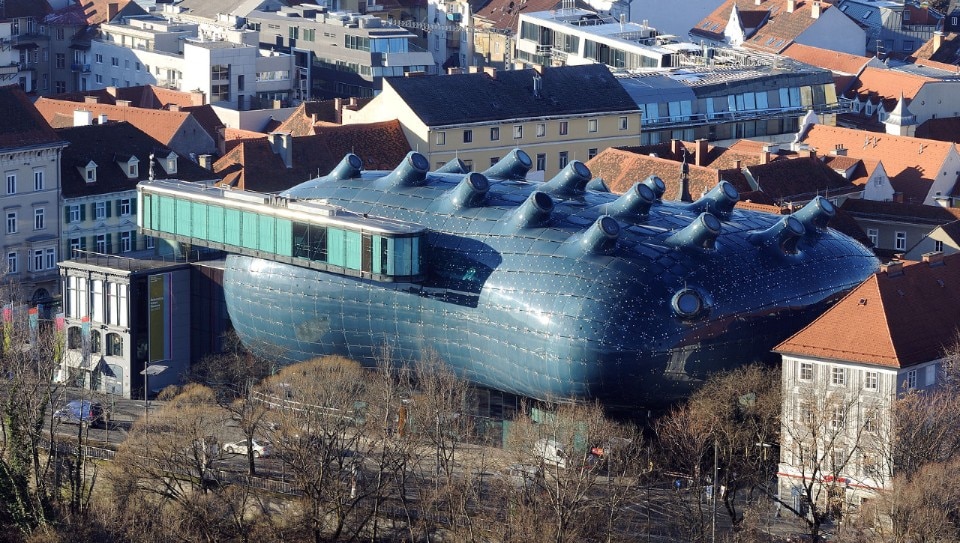The late 90s were an extremely intense season for architecture, which could access with less and less trouble higly advanced digital design technologies – often derived from other fields such as those aeronautics to which we owe the titanium shields of the Guggenheim in Bilbao – thus embarking on a quest for increasingly plastic and sculptural expressions, which we now associate with the season of the star-architects.
In 2003 the Kunsthaus, designed by Peter Cook – “former frontman of the one and only rock band in architectural history”, i.e. Archigram – and Colin Fournier, opened in Graz, Austria, and was immediately pointed to as the archetype of the indeterminate “bubbles” born out of some sign-of-the-times digital vagueness. A mistake to judge only in terms of form, Stefano Casciani would say instead, later that year in December, on issue 865 of Domus, a superficial interpretation coming from both modernist and postmodernist academia: this “friendly alien” was born out of utopias and got them realized, but above all it is a project developed around perception, around the human act of sensory inhabitation of an experience.
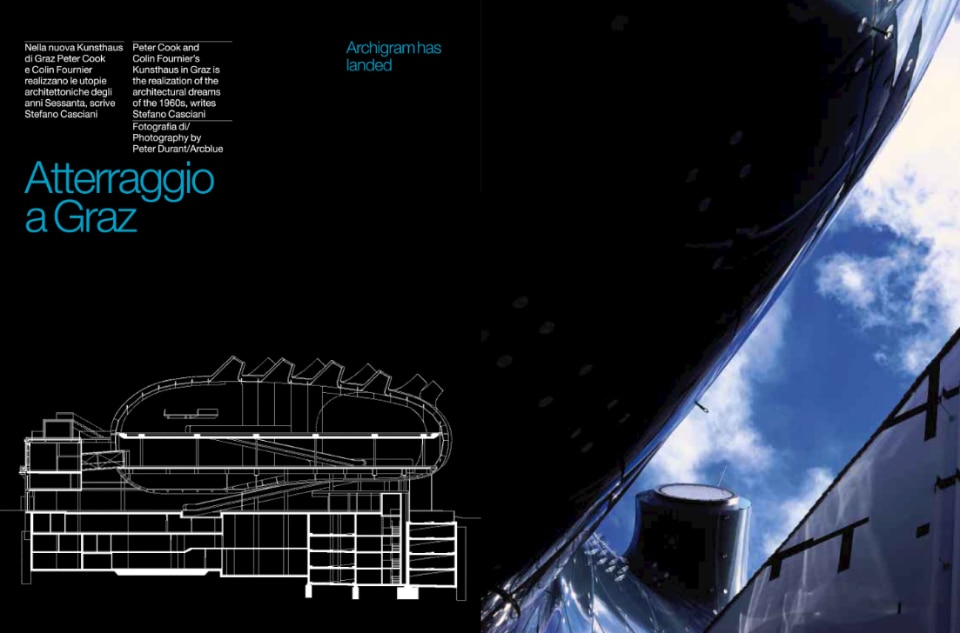
Archigram has landed
‘The love has gone. The poetry in bricks is lost’. So Archigram, nearly 40 years before the end of the last century, said goodbye to the attempt to find a compromise between the avant-garde and the vernacular.
Now the Kunsthaus in Graz, which Peter Cook – former frontman of the one and only rock band in architectural history – has just completed with Colin Fournier, demonstrates that these words were more than mere rhetoric. The Kunsthaus is a challenge to those academic critics, modernist and post, too eager to make squeamish distinctions between words and deeds.
It was they who were able in their time to totally misrepresent the thinking of the early prophets of pop architecture – people like Siegfried Gideon, whose comment on their dream buildings was ‘They look increasingly like machines that leave no room to breathe and completely deny the necessity for a human habitat’, or Ken Frampton, who once remarked, ‘Archigram were more interested in the seductive charm of the spatial image… and in the apocalyptic tones of a survival technology than in the processes of production or in the importance of advanced technologies’.
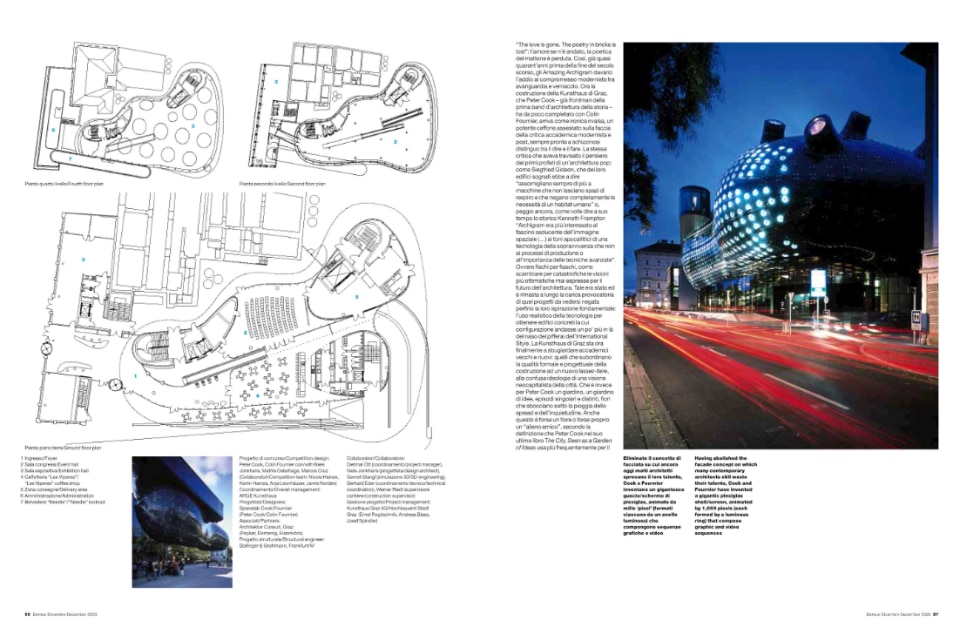
This was to misunderstand some of the most optimistic visions of the future of architecture ever expressed. So sharp was the provocative impact of those projects, and so intense and lingering was the impact of Archigram’s images, that they remained outside the canon of what was considered acceptable for decades, denied the chance of being realized in physical form.
The Graz Kunsthaus stands before academics old and new, who subordinate the quality of a building’s design and form to a new laissez-faire, to the confused ideology of a neo-capitalist vision of the city. In the eyes of Peter Cook, architecture has a garden of ideas to draw on, of singular and distinct episodes, of flowers blossoming beneath the rain of spread and unease. The Kunsthaus is one such flower, or perhaps actually a ‘friendly alien’, to quote the characterization used most frequently by Cook in his latest book, The City, Seen as a Garden of Ideas.
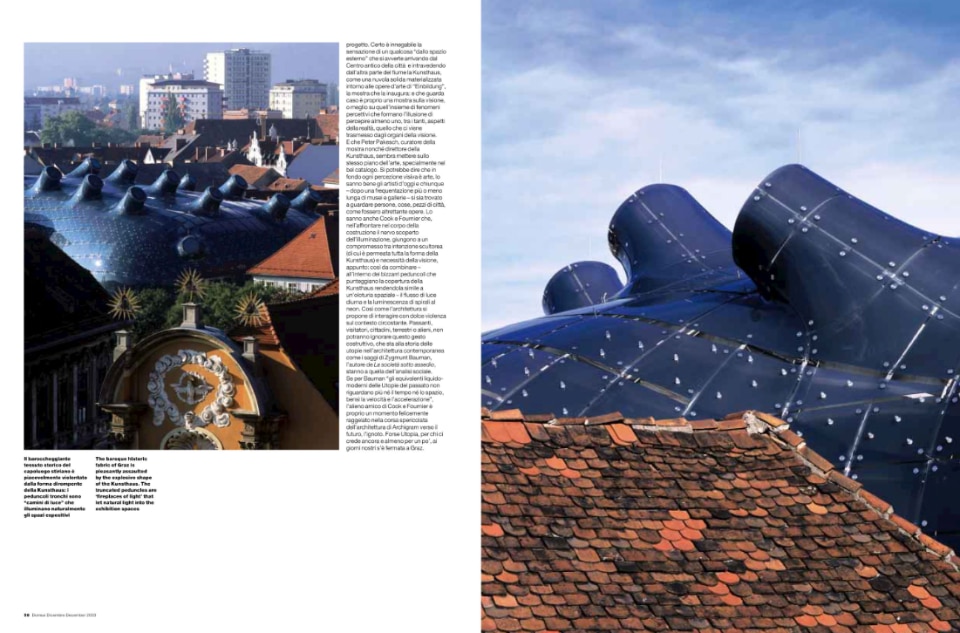
Certainly there can be no denying the sensation you get when you first see the Kunsthaus in the context of the ancient town centre of Graz: that something has crash-landed from outer space.
It’s a spaceship that looks something like a cloud condensed around the exhibits of Einbildung, its inaugural exhibition. And, significantly, it is an exhibition that is all about vision, or about the perceptive phenomena that together create the illusion of perceiving at least one of the many aspects of reality, the one transmitted by the organs of sight. And which Peter Pakesch, curator of the exhibition as well as director of the Kunsthaus, seems to put on the same level as art, especially in the handsome catalogue.
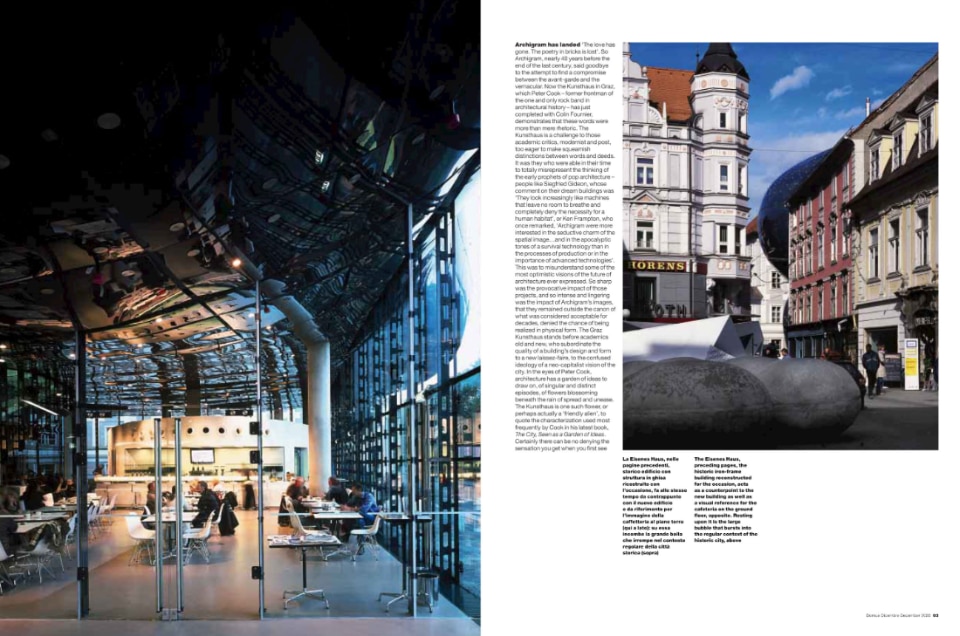
It could be said that, at bottom, all visual perception is art, as artists today well know, along with those – more or less familiar with museums and galleries – who have found themselves looking at people, things and pieces of cities as if they were as many artworks.
Cook and Fournier know that, too. Dealing with the raw nerve of the lighting in the main body of the construction, they came to a compromise between sculptural intention (with which the whole of the Kunsthaus’s form is permeated) and the necessity, precisely, for vision. In this way they have combined – in the curious barnacles dotted about the roof of the Kunsthaus, which make it look like an alien caterpillar – the flow of daylight and the luminescence of neon discs just beneath the glass skin, just as the architecture seeks to interact with a gentle violence on its surroundings.
Passers-by – visitors and locals, earthly or alien – won’t be able to miss this built gesture, which is to the history of utopias in contemporary architecture what the essays of Zygmunt Bauman, author of Society under Siege, are to that of social analysis.
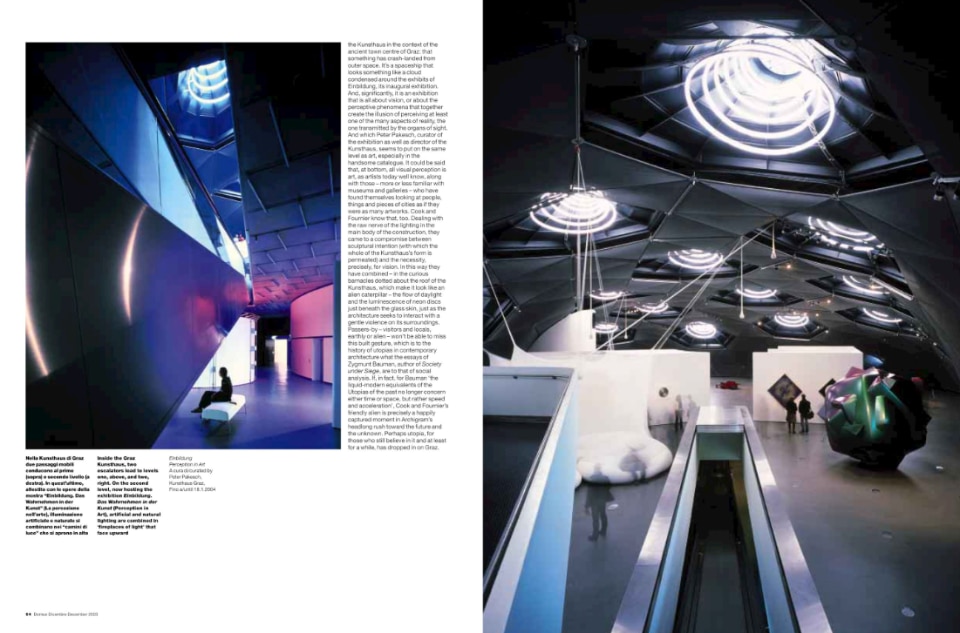
If, in fact, for Bauman ‘the liquid-modern equivalents of the Utopias of the past no longer concern either time or space, but rather speed and acceleration’, Cook and Fournier’s friendly alien is precisely a happily captured moment in Archigram’s headlong rush toward the future and the unknown.
Perhaps utopia, for those who still believe in it and at least for a while, has dropped in on Graz.


